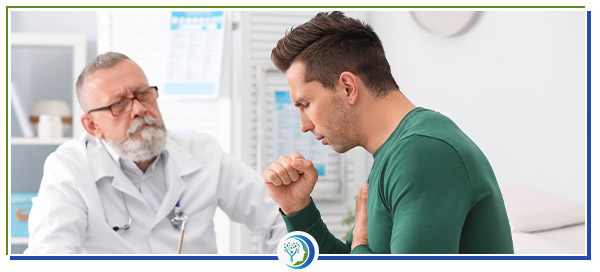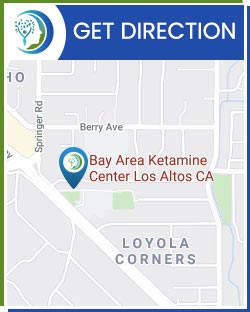How Long Does Nausea Last After Ketamine?
Nausea is a common side effect of ketamine therapy and typically lasts between 30 minutes to an hour. While nausea can vary based on individual tolerance, dosage, and method of administration, it generally resolves with rest and hydration. At Bay Area Ketamine Center, Dr. Paul Wender, MD, ensures patients are closely monitored to help manage any discomfort during and after treatment. Contact us today for more information or schedule an appointment online. We are conveniently located at 746 Altos Oaks Drive, Suite B, Los Altos, CA 94024.


Table of Contents:
What causes nausea during ketamine therapy?
How long does nausea typically last after a ketamine treatment?
What can I do to alleviate nausea after ketamine treatment?
Should I contact a doctor if nausea persists after ketamine treatment?
Nausea during ketamine therapy is a common side effect attributed to several factors. Ketamine’s impact on the central nervous system (CNS) and the gastrointestinal (GI) system plays a significant role. Its dissociative properties can affect the vestibular system, which is responsible for balance, leading to dizziness and symptoms similar to motion sickness. Additionally, ketamine can stimulate various receptors in the brain, including dopamine and serotonin receptors, which are known to influence nausea. The gut-brain connection also contributes, as many receptors found in the brain are also present in the gut, making the digestive system sensitive to ketamine’s effects.
Beyond direct pharmacological effects, other physiological responses and individual factors can contribute to nausea. Ketamine can cause temporary fluctuations in blood pressure, which may lead to dizziness and stomach discomfort. Dehydration is another factor that can exacerbate nausea, making proper hydration before treatment important.
Furthermore, some individuals may have a heightened sensitivity to the drug or may experience anxiety related to the treatment, which can also trigger gastrointestinal upset. Fasting before the infusion is often recommended to minimize nausea, as ketamine can relax the esophageal sphincter, increasing the risk of stomach contents moving up the throat. At Bay Area Ketamine Center, our healthcare providers adjust ketamine dosages and infusion rates to minimize nausea. We also offer anti-nausea medications during therapy.
Nausea following a ketamine treatment typically lasts for a few hours, but its duration can vary depending on the individual and the specifics of their treatment. For many people, mild nausea may arise during or shortly after the session and should gradually subside as the ketamine’s effects begin to wear off. Since ketamine can impact various systems in the body, some individuals may experience nausea as their body adjusts to the medication. This response is typically mild and temporary.
To ease nausea after treatment, it’s helpful to stay hydrated by sipping on clear fluids like water, ginger tea, or an electrolyte drink. Additionally, resting in a quiet, comfortable environment can help reduce sensory overload, which may worsen nausea. Avoiding heavy meals immediately after the treatment and opting for bland, light snacks can also be beneficial. If nausea persists or worsens, it’s important to reach out to the healthcare provider who administered the ketamine. They can offer further advice, provide adjustments to the treatment plan, or recommend additional measures to improve comfort during the recovery period.
If you receive treatment at Bay Area Ketamine Center and experience nausea that continues longer than expected or becomes severe, please inform our healthcare team. Dr. Paul Wender, MD, is committed to ensuring your comfort, safety, and optimal therapeutic outcomes.
At Bay Area Ketamine Center, your comfort and care are our highest priorities. Nausea following ketamine treatment is a common side effect, but several strategies can help ease the discomfort and ensure a smoother recovery. Staying hydrated with clear fluids such as water, ginger tea, or electrolyte drinks can soothe your stomach while opting for bland, easily digestible foods like toast or crackers helps minimize nausea. Relaxation techniques like deep breathing or mindfulness can also calm both the body and mind, reducing nausea sensations. Additionally, resting in a quiet, comfortable space with minimal noise and soft lighting can further limit sensory overload, which often exacerbates nausea.
If symptoms persist, incorporating natural remedies like ginger tea or ginger candies may provide gentle relief due to ginger’s anti-nausea properties. Moving slowly and carefully after treatment is also important, as sudden movements can trigger dizziness and nausea. If the discomfort becomes severe or prolonged, it’s essential to reach out to your healthcare provider, who can recommend appropriate anti-nausea medications or further adjustments to your treatment plan.
We are dedicated to supporting you throughout your ketamine therapy journey. If nausea persists or becomes severe, our medical team is available to provide guidance and ensure you receive the best care for a comfortable, effective treatment experience.
If nausea persists after ketamine treatment, it’s important to reach out to your doctor to ensure there are no underlying complications or side effects that need attention. Ketamine can sometimes cause mild nausea, which typically resolves within a few hours. However, if the symptoms persist or worsen, it could indicate that the dosage needs adjustment or that you’re experiencing an uncommon reaction. A healthcare professional will be able to assess your symptoms and provide the necessary guidance or treatment.
Your doctor may recommend supportive measures to alleviate the nausea or advise a follow-up appointment to adjust your treatment plan. It’s crucial not to ignore persistent symptoms, as they may interfere with your recovery process or indicate that further monitoring is required. Always consult with your healthcare provider to ensure your safety and well-being during and after treatment.
At Bay Area Ketamine Center, our experienced providers can assess your condition and determine if adjustments in dosage, administration technique, or supportive therapies are necessary. Our team of professionals ensures your comfort, safety, and optimal treatment outcomes while addressing any potential concerns promptly. Contact us today for more information or schedule an appointment online. Our clinic is conveniently located at 746 Altos Oaks Drive, Suite B, Los Altos, CA 94024. We serve patients from Los Altos CA, Sunnyvale CA, Palo Alto CA, Stanford CA, Atherton CA, Cupertino CA, Santa Clara CA, Mountain View CA, Loyola CA, and surrounding areas.

Check Out Our 5 Star Reviews







